#40x zoom
Text
people on tiktok showing off their nonexistent flaws under the guise of "normalising insecurities" are going to put me in jail for aggravated assault not because of the diplomatic and nice "stop calling them flaws they're part of you" angle but because of the ugly sobbing childish "if i have to see one more person with a set of flawless american tv teeth complaining about how fucked their teeth are im going to pull them all out with pliers myself" angle
3 notes
·
View notes
Text
X B500. Manuel de référence Les appareils photo Nikon COOLPIX ont été conçus selon les normes les plus strictes
Manuel pour Nikon Coolpix B500 Appareil photo numérique. Consultez et téléchargez le PDF, trouvez des réponses aux questions fréquemment posées et lisez les
Retrouvez la notice de l'appareil NIKON COOLPIX B500 categorie NIKON au format PDF. La notice NIKON COOLPIX B500 - NIKON. Aperçu de la
</p><br>, , , , .
#http://vk.cc/c7jKeU#nofollow#_blank#<p> </p><p> </p><center>NIKON COOLPIX B500 PDF >> <strong><u><a href= rel= target=>DOWNLOA#<br> firmware nikon z50carte mémoire nikon coolpix b500#<br> nikon coolpix b500 mode d'emploi#<br> driver nikon coolpix#<br> nikon firmware#<br> nikon coolpix bridge#<br> mise à jour coolpix b500#<br>#<br> </p><p> </p><p> </p><p>Le COOLPIX B500 embarque un puissant zoom optique NIKKOR 40×#extensible jusqu'à. 80× grâce à la fonction Dynamic Fine Zoom1#idéal pour immortaliser les#Le COOLPIX B500 possède un puissant zoom optique NIKKOR 40x#extensible jusqu'à. 80x avec le Dynamic Fine Zoom1. Il est idéal pour saisir le plaisir des#Manuels de Coolpix B500 de %brand. Consultez gratuitement le manuel de Coolpix B500 de Nikon ou posez votre question à d'autres propriétair#Nous vous remercions d'avoir acheté l'appareil photo numérique Nikon COOLPIX P500. Ce manuel est conçu pour vous faire profiter au mieux de
0 notes
Note
This might sound like a weird question, but have you ever come across a camera with a Bird Watching setting? I have an Olympus SP-800UZ and one of the modes it comes programmed with is literally called that, for taking pictures of birds in the wild.

As someone whose special interest is birds, I love this setting and use it a LOT, but I've never been able to find another camera with a setting like it, and at some point I told myself I didn't want to replace the camera until I could find one with a similar setting.
The reason I ask is because I've been following for a while, and I've come to respect your opinions on photography.
I tried researching your camera and figuring out what exactly the bird watching mode does and even the official manual did not say. If I were to guess, it just sets the camera up with certain parameters that are usually ideal for photographing birds, but I don't think it does anything special that other cameras can't do. You would just have to set a different camera up to those parameters rather than the camera doing it for you.
If I were to guess, it probably enables a certain autofocus mode for small subjects and limits how slow the shutter speed can go so you don't get motion blur when very zoomed in.
However, I know exactly which features are important to get good bird photos, so as long as the camera has the following features, you don't really need a dedicated bird mode. Though if a camera has a "pet mode" it would probably work similarly to the bird mode you are used to.
Most important bird photography features...
Good autofocus
Good zoom range
Image stabilization (Either optical or sensor, not digital)
Autofocus has come a long way in the last few years. It's difficult to assess the autofocus from specifications alone, so you will probably need to rely on reviews to know if the camera locks in on subjects well. Some cameras have pet and wildlife autofocus features that can be very helpful in tracking smaller subjects like birds. So I would look out for any camera that has a pet autofocus mode or a review that says it locks onto smaller subjects well—even if they don't mention birds. If it can lock onto a chihuahua, it can usually do so with a bird too.
Birds and wildlife in general tend to get spooked easily and it is often difficult to get close without them running or flying away. So having a longer zoom range can really help you keep your distance and not startle your subject. I would say the minimum focal length for getting good bird shots is around 300mm (on a full frame camera). Some cameras only quantify their zoom by magnification (20x, 30x, 40x, etc.) and don't really say what that is in relation to. So focal length is a better metric to assess how zoomy a lens is. 10-35mm would be wide angle. 50mm is about like our eyes. 100mm is slightly telephoto. And 300mm and above would be very telephoto.
You may need to google the focal range equivalent to a full frame 35mm camera. So you would search "[camera model] 35mm equivalent focal range" to figure that out. And as long as it goes past 300mm, it might be a good candidate for birding.
When you have a camera that zooms in that far, any movement will be exaggerated—especially if you have naturally shaky hands. Not only can that introduce motion blur into your images, but it can make it very difficult to track your subject. Looking through the viewfinder will result in a wiggly mess and you won't know what you are pointing the camera at.
Image stabilization helps negate that exaggerated movement.
There are 3 kinds of stabilization. First is optical, which is built into the lens with a floating glass element. Then there is sensor stabilization (often called IBIS for "in-body image stabilization") which allows the sensor to shift and move to counteract any motion introduced by your hands. And the last form is digital stabilization which is done using the camera's software.
The first two are physical solutions that can adjust on the fly much like a chicken's head.
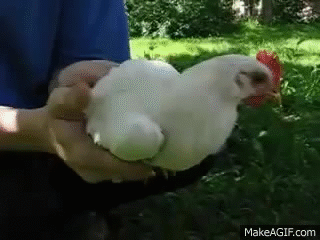
The digital solution is mostly just fancy image cropping. It zooms in a tiny bit on your image and then aligns a continuous crop to give the appearance of a stable image.

The lens and the sensor are still a jiggling mess, but this constant cropping allows you to see the illusion of a stable image in your viewfinder and in the videos you take. And while this is very helpful for tracking subjects and capturing video footage, it will not help you negate motion blur—which is why the other two methods are preferred for still photography.
Bigger cameras can often forego stabilization because the zoom lenses are bigger and heavier and don't shake as much and they let in a lot more light so you can raise your shutter speed to freeze motion. It's still nice to have, and if you have IBIS and optical stabilization combined on a big camera you can almost take pictures in the dark without camera shake, but all of those conveniences can get costly.
The camera you have now is called a "bridge" camera or a "superzoom". These are (relatively) inexpensive cameras that use a smaller smartphone-style sensor but with a more classic camera body surrounding it and a non-changeable lens. Small sensors have one big advantage where if you put a zoom lens in front of them, they can see from Alaska to Russia.
For instance, your camera has an 840mm equivalent lens. That is near telescopic.
For reference, this is what an 800mm lens looks like for a full frame professional camera.

It weighs 10 pounds and costs about $13,000.
Granted the image quality of that lens is in another universe compared to your superzoom, but if you are mostly interested in documenting the birds you are encountering, a superzoom is a neat tool to have. It's like digital binoculars.
So I guess the question is, do you just want to document your bird adventures or do you want to delve into artistic bird photography?
You can upgrade to a nicer superzoom and get some improved clarity and ease-of-use features, which is totally valid. You could even get a "premium" superzoom that can do artistic bird photography in ideal lighting conditions.
Or if you go with a more professional interchangeable lens camera system (ILC), you can achieve some stunning artistic photos like these...



Freezing a bird midflight while catching a fish is just not really feasible with a basic superzoom.
Let's talk about the advantages and disadvantages of a superzoom bridge camera as compared to a more professional ILC setup.
Superzoom Pros
No learning curve. These cameras are designed for novice photographers and have very good automatic functions. You can pretty much pull them out of the box and start taking pictures without knowing the fundamentals of photography.
Incredible zoominess. You can get amazing zoom power for a fraction of the price.
Budget friendly. The top of the line superzoom camera is still only about $1500 as compared to the top of the line mirrorless ILC (for wildlife) which is $6500 *without* a lens. And the lower to mid range superzooms are even more affordable, especially if you consider used options.
Superzoom Cons
Noisy images in low light. These cameras are mostly suited for bright sunny days. The small sensors and cheaper lenses do not capture very much light. In more challenging lighting situations you will tend to get very noisy images due to using a high ISO to compensate.
Inconsistent image quality. Under the best of circumstances, you can get some really beautiful photographs. But when you push the camera to its extremes, the image quality can start to deteriorate. Low light causes noise. The more you zoom in, the softer your images will get. Low megapixels limit your options to crop in on far away subjects—which is often an issue with wildlife.
Deep depth of field. A lot of bird photographers like using shallow depth of field to blur the background so the bird really stands out in the photo. Small sensors can have a very hard time blurring the background unless the subject is quite far away and you are zoomed all the way in. But when you are all the way zoomed in, the image can get soft and lack detail. So you trade image quality for a blurry background.
Lack of professional features and accessories. There are many advanced features that can make bird photography much easier. Some cameras have advanced motion tracking that can allow you to capture birds in flight. The latest generation can even track a tiny bird's eye. There are also accessories that are only made for ILCs. Like motion activated shutter triggers that will take a picture of a bird automatically if you set up a camera near a feeder. There are flashes that work at very long distances. You can get camouflage skins for your lenses so the birds can't see you. Stuff like that.
ILC Pros
Lower image noise. With a bigger sensor and better lenses you can shoot with a very low ISO in good light and get incredibly clean noise-less images.
Better high ISO performance. If you are in low light, you can increase the ISO and still get a very good image. The noise on an ILC is much less distracting and easier to deal with—especially with advanced noise reduction software.
Background blur is easy. Due to the much larger sensor and telephoto lenses, almost every telephoto image will have beautiful blurry backgrounds no matter how small the aperture is.
Sharper, faster lenses. The lenses are much sharper and let in a lot more light. The quality of the image does not decrease as you zoom in. And the sharp optics allow a lot of leeway for cropping. So even if a bird was super far away, you can crop the image after the fact and it will still be quite detailed.
More megapixels. A lot of bird photography needs to be cropped in due to subject distance. Having more megapixels allows for more cropping. (I know I keep talking about cropping, but it really is a huge aspect of most bird photography.)
Advanced autofocus. This is the big game changer, especially on the new mirrorless cameras. The latest Canon and Sony cameras have eye detect autofocus for animals. You can literally lock onto a bird's eye while it is in flight and get perfect focus. It's bonkers.
ILC Cons
Steep learning curve. A lot of people think they'll get a big ILC and immediately get better pictures than their smartphone. They are often disappointed when that isn't the case. You really need to learn the fundamentals of photography to get good photos out of an ILC (free course here). They do have automatic modes, but without learning about aperture, shutter speed, and ISO (the exposure triangle) and how to balance them and when to prioritize what, you might end up with *worse* photos than a smartphone.
Wildlife photography can get very expensive. Big lenses with a lot of zoom are some of the priciest available. There are some budget options, but you will have to sacrifice quite a bit of zoom and light-gathering capabilities. The quality of the photos is usually worth it, but you may have to learn how to get closer to birds to photograph them.
Heavy as heck. Superzooms are very light and portable. A wildlife ILC configuration is very unwieldy. The camera is heavier. The lens is long and heavy. Carrying all of that gear into the wilderness can be quite a hassle.
Some camera suggestions...
Superzoom Options
If I'm being honest, in the sub $300 range, I don't think you'll be able to drastically improve over what you already have. All of the cameras in this range are quite similar and while a few might have some features that are helpful, the image quality is going to be roughly the same.
You are probably going to need to spend at least $400-700 to get a meaningful upgrade from what you have.
The top-of-the-line superzoom would be the Sony RX10 Mark IV at $1100 used. You can get the previous model, the Mark III, for about $900 used. It's a wonderful camera and the image quality and features rival or even surpass some ILC options. If you don't have the time to learn an ILC system but want the best possible quality, this might be an option. But an ILC will still give you better results if you are willing to put in the time.
For more mid-tier superzooms, you might look into the Panasonic Lumix models. They use slightly larger sensors than most superzooms and are known for their lens optical quality along with their stabilization.
The FZ1000 is getting very old, but it is still a powerful camera at a good price. The only downside is the focusing system isn't as advanced as newer cameras. But it will be better than what you have and you can find one used for around $400.
The newer FZ1000 II or the FZ2500 would be great options that have more modern autofocus and a lot more bells and whistles. They are fairly similar and can both be found for around $650 used. They do great video as well.
These are not the only options, but they are ones I know of and models I have heard positive things about. If you want to see what else is out there I would google "bridge superzoom cameras" and then maybe add your price range as well. Read reviews and watch YouTube videos to get a sense of the cameras you are interested in. As long as the camera has decent autofocus, I don't think you need a specific bird feature—so I wouldn't limit yourself in that regard.
ILC Options
When trying to come up with a good bird photography setup for interchangeable lens cameras, there is basically an easy, medium, and hard mode depending on how much you spend.
As I mentioned, the top-of-the-line mirrorless cameras have autofocus tracking that can lock onto a bird's eye while in flight. They have both IBIS and lenses with optical stabilization. They have burst modes that let you take 30 photos per second. They have 50 megapixel sensors that allow you to crop to your heart's content and still have megapixels left over.
It's quite dreamy if you have the money.
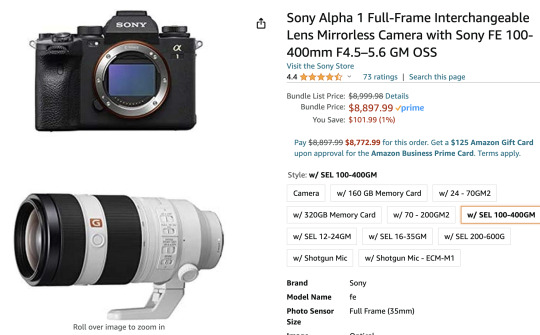
But I'm guessing if you are coming from an Olympus bridge camera that is probably a bit more of an upgrade than you were thinking.
So if easy mode is not viable, let's talk about medium and hard mode.
If you still want the bird detecting autofocus, in body image stabilization, and a pretty zoomy lens, Canon has some newer mirrorless cameras that would take amazing artistic bird shots. It's still spendy, but not $9000 spendy.
The Canon R7 is a great APS-C mirrorless camera with IBIS that can be found used for about $1300. It has 32 megapixels and due to having a slightly smaller sensor, you even get some bonus zoom out of all your lenses at about 1.6x. It's still a much larger sensor than a superzoom, just not quite the size of the Alpha 1.
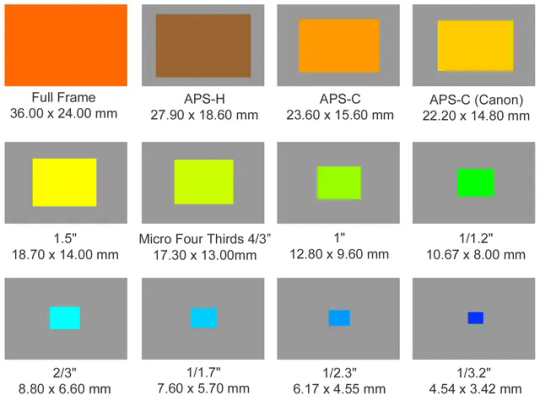
Alpha 1 is Full Frame. R7 is APS-C. And Superzooms don't get any bigger than the 1" sensor.
Pair the R7 with the RF 100-400mm lens ($600 used) with optical stabilization, and you would have a stellar bird photography setup for about $1900. (It would be a 160-640mm equivalent lens on the R7 due to the 1.6x crop factor.)
Which is probably still way more than you want to spend.
So we have the hard mode option.
No bird eye autofocus. No stabilization. You have to learn the fundamentals and practice in order to get good shots. However, wildlife photographers have been getting AMAZING photos with the gear I'm about to suggest. In fact, all of these photos were captured with the hard mode ILC combo.
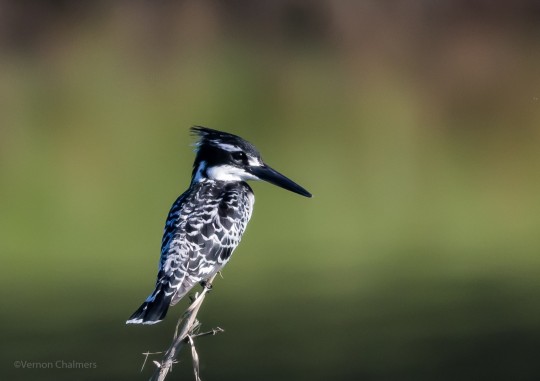

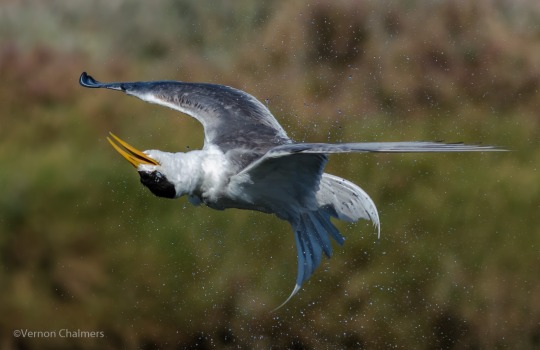
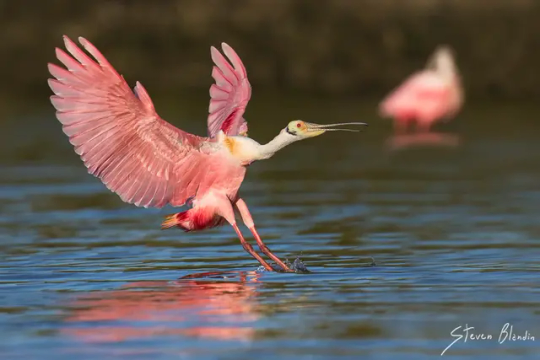
The Canon 7D Mark II has been a beloved camera body for wildlife photography for many years. Many pros still use it to great effect to this day. It doesn't have bird autofocus, but it still has one of the best DSLR autofocus systems that was ever developed. It can even track moving subjects, it just doesn't know it is tracking a bird so it is more prone to error on occasion. It can be found used for $500-600.
The Canon 400mm F/5.6 telephoto lens is one of the most affordable lenses Canon ever made for wildlife. It is an old lens, but it is sharp and takes beautiful images. No stabilization, but it is big and heavy so that isn't a huge deal. You can also carry a monopod rest it on. And on the 7D II, it is the equivalent of a 640mm lens. It costs around $650 used, which is very inexpensive compared to other telephoto lenses.
So you are looking at around $1200 for the combo. But the photos you can achieve with these two items will blow pretty much any superzoom out of the water.
To sum up...
ILC photography is always going to have a steep learning curve and expensive barrier for entry, but you can achieve some truly stunning results.
Superzooms are getting better and some of the newer ones can still take excellent pictures of birds under the right circumstances. They are lightweight and hassle free and allow you to get incredible zooms for a low cost.
If you mostly take photos of stationary birds outside on bright sunny days, you will be fairly happy with a superzoom.
If you want to take photos during darker times like sunrise or sunset or in a dense forest... or if you want to take photos of birds mid-flight, you will probably have to get an ILC.
I hope that was helpful. I know I overdo these answers, but I try to help as many people as I can by giving a broad overview of the topic and the myriad ways to go about things.
46 notes
·
View notes
Note
Hey, I'm fuckin thrilled to see you back on tumblr- I've been following your stuff since LiveJournal days, back when "I wonder if she's ever gonna finish that thing with the ninja accountant", but I detest Twitter, so my updates have been limited to when Amazon tells me there's a new book to pre-order, and I'm jazzed to see you back on my dashboard <3
Also, I've gotten into birding this past year, and my brother in law got me a 40x zoom telephoto lens to clip onto my phone camera for my birthday last week, and you're probs the only person who'd think that's as cool as I do.
I am absolutely thrilled and also WHERE DID HE GET THAT LENS OMG OMG?!
241 notes
·
View notes
Text
Here's the Gobbet painting process at 40x speed, original time was around 3h. I tried my best to avoid zooming in and out all the time to make this somewhat watchable.
Also OBS just refuses to record my brush settings, so whenever a ghost rectangle shows up, I'm playing around with my brush's shape dynamics and transfer.
No audio to avoid any issues.
8 notes
·
View notes
Text
Me realizing my seats for Grand Rapids will give me an amazing view of Jake’s catwalk and the opportunity to feed the Hand Kink Community via my 40x zoom camera 👁️👁️

13 notes
·
View notes
Text
"...Delle 736 telecamere, 200 avranno una tecnologia a 2megapixel fino a 40X di zoom. Altre 134 saranno multiottiche con degli speciali sensori in grado di rilevare le variazioni nel livello del suono. Oltre alle videocamere saranno installati poi 25 portali di lettura di targhe, che controlleranno in tutto il centro storico 40 direzioni di marcia. L’innovazione tecnologia è d’altronde al centro del progetto, pilota e finanziato nell’ambito del Pnnr..."
____________
E mi prendono ancora in giro quando scrivo cose come queste qui.
#zombie#società#società malata#svegliatevi#aprite gli occhi#sistema#manipolazioni#verità#dittatura#schiavi#controllo#prigione#catene#discernimento#responsabilità#propaganda#sorveglianza#telecamere#autovelox#genova#città intelligenti
6 notes
·
View notes
Text
Field Recording
I'm considering buying a portable device for field recording. Does anyone have any recommendations?
so far, Ive been looking at something along the lines of the zoom h4n, or Tascam dr-40x.
If anyone has tried either of those; what's the battery life when using external microphones? what about with the phantom power?
5 notes
·
View notes
Text
there's birdwatching. and then there's sighting the bird and having enough time and presence of mind to focus on it at a crisp 40x optical zoom.
#my birthday gift has finally arrived#its a 40x beginners monocular#anyways it's proper exciting highly rec it
6 notes
·
View notes
Text


if you look hard enough at the first pic, you can faintly make out the outline of what I thought was a huge resort on Cozumel. Turns out, is a cruise ship lol
(Now to talk shit lol)Your blue bubble phone could never🤣🤣🤣🤣 this is only 60x, I got another 40x zoom left and this is just the S21 Ultra, the 23s just came out and iphones still can't even take good moon pics 🤦🏾♂️. Leave your Android friends alone! We love it here
2 notes
·
View notes
Text
A series of photos created using the digital zoom feature (crop tool) of my photo-editing software on a full frame sensor (Nikon D850) photograph to replicate the field of view provided by common camera sensor sizes.
Full frame: roughly the same size as ye old 35mm film cameras.
Field of view: 100%
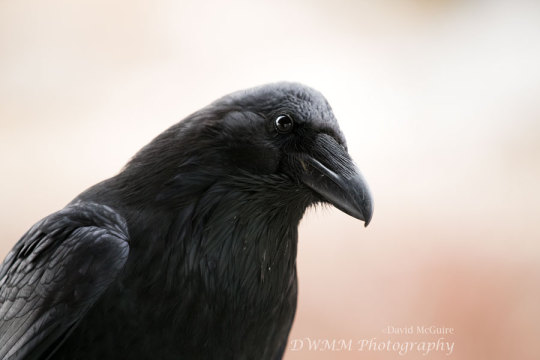
APS-C: the "crop sensor" body for cameras with interchangeable lenses (DSLR or mirrorless).
Field of view: ~66.67%

1-inch: found in some Point&Shoot cameras
Field of view: ~37%
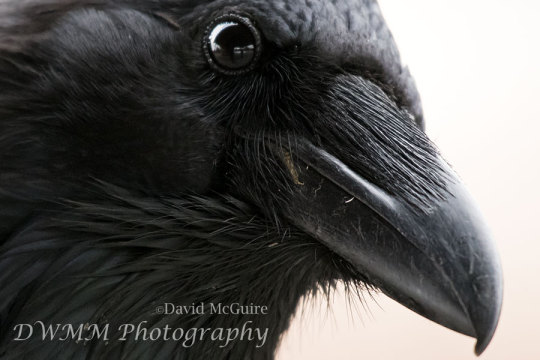
1/2.3-inch: common for compact and "super zoom" Point&Shoot cameras. Also, cell phones.
Field of view: 18%
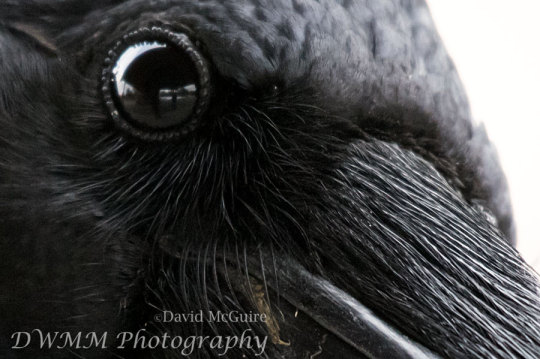
1/3.6-inch: shows up in secondary cameras on some cell phones.
Field of view: 11.5%
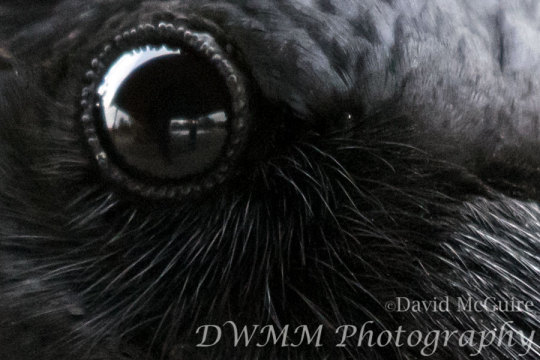
Despite the frequency crop factor is associated with "extra reach" in photography circles, it's actually all about the change to field of view.
So when a camera has tech specs of "4.3-357mm (angle of view equivalent to that of 24-2000mm lens in 35mm [135] format)" on the company website or in a review (more likely just shortened to 35mm equivalent of 24-2000mm), it's not saying the camera has the equivalent magnification. Just that you are magnifying a smaller part of the view.
In more generalized birder terms the ~0.01-7x doesn't change to a ~0.5-40x, but you'll see the same amount of the landscape as that higher magnification.
And this can absolutely work for someone depending on what the photos are for. Cameras get heavy and big (my gear takes up a full size backpack and body w/ lens is ~9lbs/4kg to hold awkwardly steady), and ones with smaller sensors are smaller and lighter.
#get the gear that works for you#but also know what the marketing department is saying#marketing always wants you to think whatever benefits their sales most#extra reach like cardboard tube binoculars#language matters#camera stuff#raven#digital zoom is a lie of a feature
2 notes
·
View notes
Text
G-Anica Digital Camera, 4k&64MP Cameras for Photography ,Video Camera,40X zoom Camera for YouTube with Flash, WiFi & HDMI Output
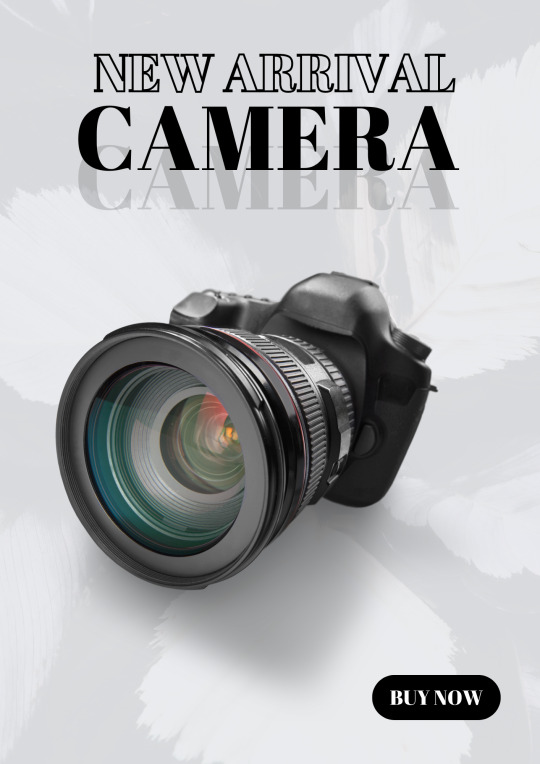
📸 Elevate Your Photography Game with the G-Anica 4K & 64MP Digital Camera! 🌟
Ready to capture life's most precious moments in stunning clarity and detail? Say hello to the G-Anica Digital Camera – your ultimate companion for unleashing your creativity and capturing breathtaking photos and videos.
🔹 Crystal-Clear Imaging: With 4K resolution and a whopping 64MP sensor, every shot is a masterpiece waiting to happen. 🔹 Professional-Grade Performance: Whether you're a seasoned photographer or a hobbyist, the G-Anica camera delivers unparalleled image quality and performance. 🔹 Versatile Shooting Modes: From portrait to landscape, night mode to panorama, unleash your creativity with a variety of shooting modes to suit any occasion. 🔹 Intuitive Controls: User-friendly interface and ergonomic design make capturing that perfect shot a breeze. 🔹 Compact and Portable: Take your photography adventures anywhere with the lightweight and portable design of the G-Anica camera.
Watch our YouTube video to see the G-Anica Digital Camera in action! [Insert YouTube link]
Don't miss out on the opportunity to elevate your photography game. Get your hands on the G-Anica Digital Camera today and start capturing memories that last a lifetime!
#GAnicaCamera #DigitalPhotography #4KPhotography #64MP #PhotographyGear #CreativeCapture #ProfessionalPhotography #CaptureTheMoment #PhotographyEnthusiast #PhotographyLovers #MemoriesInFocus #CameraTech #InnovativeCamera #DigitalArtistry 📷
BUY NOW>>https://s.click.aliexpress.com/e/_DEOESUZ
0 notes
Text
3/15金
夕方、なんか落ち着かないと思ったら抗不安薬(メイラックス)を飲み忘れてた。つまり今のところ毎日服用してないとダメってことだな。ZOOMからいつの間にか32bitフロート録音対応のちっこいレコーダが出ているのを知ってすぐにオーダ。しばらく入荷待ちのようだったのだけど思ったより早く本日到着。ちっちゃい! 軽い! 単4電池で10時間近く録音可能! 耐音圧120dB SPLがどれくらいか分からないのだけ心配。去年買ったZOOM M2が135dB SPL、その前に使ってたTASCAM DR-40Xが125dB SPL。どうなんだろうなー。原さとしさんから頼まれているとある会の配信、zoomの多次元中継っぽいことを言ってたと思うのだけど、それは付け焼き刃ではのぞめないのでお断りのメールを送信。金曜夜はTBSドラマ「不適切にもほどがある!」。毎週楽しみ。地球屋でのたばこ煙の影響もあるのかどうか、喉が痛くてたいへん。ただの風邪。ふつうの風邪。37.0度ぎりぎりな微熱とあと鼻水だらだら。つらい。それもあってやっぱり就寝前に��頭痛薬。

0 notes
Text
Someone had a question about the security cam I use. I use the outdoor/indoor alfred cam plus. I keep mine indoors by the window. It's very responsive as far as getting a live feed from your phone. I can literally watch the live feed all day with no interruption if I so wanted. The camera has a large viewing area (I crop my bird cam videos because there's no point in seeing my entire yard).
So far on the cam this early morning, I spotted juncos, two cardinals,one jay and one cat (they love being closer to the house and thus the clearest seen from the security camera). My bird watching area is not close enough for astute observation-- it's about 15 feet from my window. The jays and cardinals you can tell by their coloration, so I'm not bothered too much. Anything bigger the camera will of course show clearer from that distance. If you were to hide this camera close by at an actual bird feeding station, you'd get some very good views from it. Alfred cam has a 4x zoom feature which is convenient. Remember this is a security cam, not a high end 40x optical zoom, crystal clear digital camera. Temper some expectations concerning distance and pixelation.
I intended to use mine solely to see the consistency of my crows in the yard (which is the main bird I'm interested in). It doesn't matter to me if I see big black shapeless blobs, I know what they are and am happy. I know other birders will want closer looks at smaller songbirds, and to video them from a security cam. This camera is also very good for that but the set up will be vastly different due to different goals.
Perhaps I may set up something closer to the window at a more favorable time to see the true camera clarity, but as of now, I have nowhere to put a feeder close by. A shepherds hook will not pierce my concrete, of course. I have ideas, but all will have to wait until the 'swarm' moves on, so other birds can feel safer.
0 notes
Text
Honor Announces Its Lightest Foldable Phone Yet Starting at Just ¥6999
<h2>Honor Launches the Magic Vs2 Foldable Screen Smartphone</h2>
<p>On October 12th, Honor launched the all-new Magic Vs2 foldable screen smartphone. This follows the lightweight Magic V2 and fashionable V Purse models as Honor's newest large-screen foldable phone. It attracted significant attention upon release.</p>
<p>Honor has now announced that the Magic Vs2 will go on sale officially starting from October 17th, which is tomorrow. Pricing will start at 6999 yuan for the base model.</p>
<p>The outer screen size is 6.43 inches with a resolution of 2376x1060, while the inner screen is 7.92 inches with 2344x2156 resolution. Both support 3840Hz high frequency dimming to reduce eye strain. At only 229g and 5.1mm thin when unfolded, it is Honor's lightest and most compact foldable yet thanks to their self-developed titanium hinge and lightweight magnesium alloy frame.</p>
<p>Powering the device is the Snapdragon 8+ Gen 1 Mobile Platform along with Honor's GPU and OS optimizations for smooth performance over time. Built-in independent storage and dual security systems protect data and payments. A 50MP main camera, 20MP telephoto, and 12MP ultra-wide deliver up to 40X hybrid zoom. A 5000mAh battery supports 66W fast charging too.</p>
<p>The 12GB+256GB model is priced at 6999 yuan, with the higher-end 16GB+512GB variant at 7699 yuan. Interested customers can look out for its official launch tomorrow, October 17th.</p>
0 notes